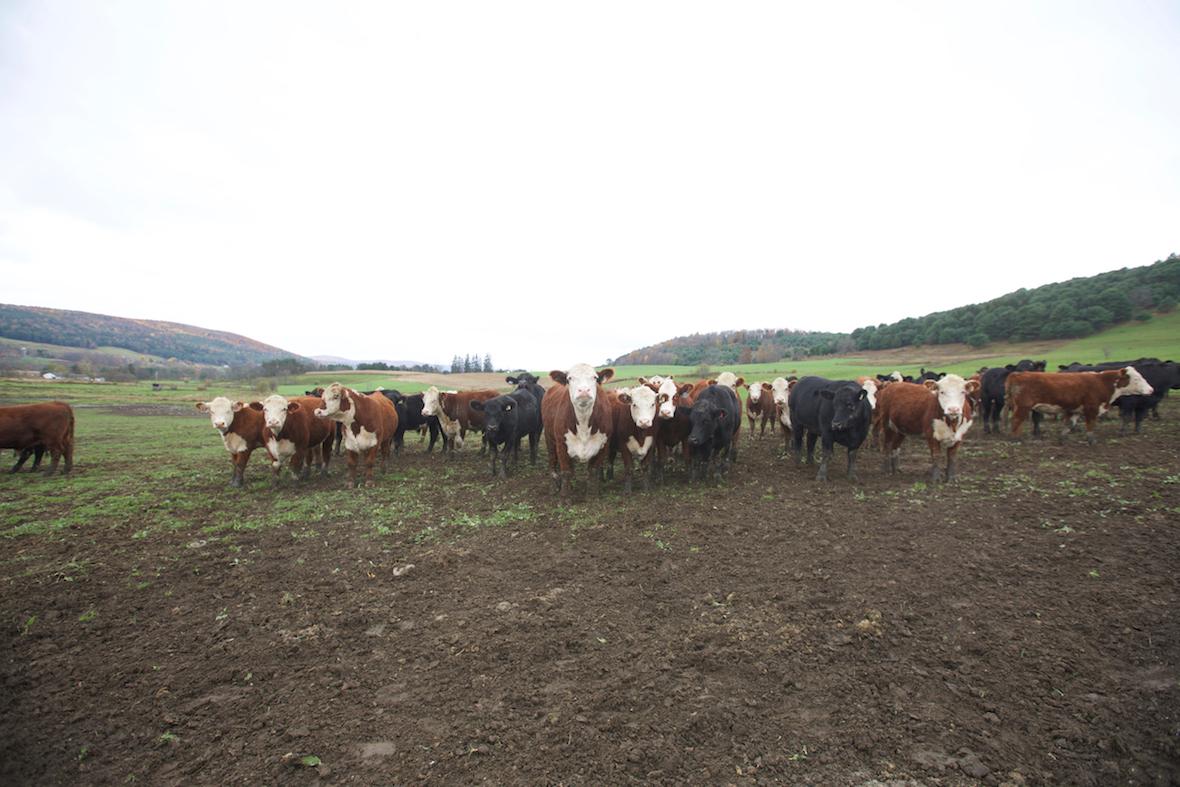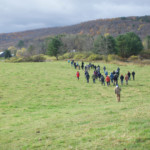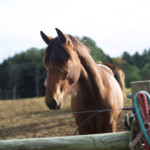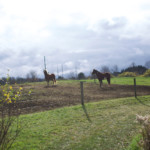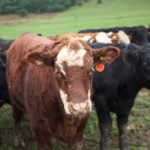At 6:00 a.m. on a Monday morning late last fall, a bus pulled up in front of Fleisher’s Craft Butchery in Park Slope. Employees from both New York City shops, the Red Hook processing facility and offices in Manhattan had gathered, albeit groggily, for the annual upstate staff retreat.
The trip includes a tour of the farms from which the butcher shop buys its meat and is what COO Samantha Garwin calls “an immersive, visceral reminder of what we do and why.” To her, “bringing our entire team—from dishwasher to CEO—to visit our farms, [sends] a message that everyone is part of making this thing work.”
Joined by colleagues from the original branch in Kingston, New York, and two shops in Connecticut, the team saw how Fleisher’s chickens, turkeys, cows and pigs live. We joined their trip—here are some highlights:

Up before dawn, the Fleisher’s New York City team packed into a bus for the annual staff trip.

The New York and Connecticut teams met up in Kingston, New York, at the original Fleisher’s shop. Here CEO Ryan Fibiger, who trained to become a butcher here, shows the team some of the classic methods still used at this shop, like salting the cutting tables at the end of each day.




The first farm stop was at Hidden Camp Farm in Canajoharie, New York—more than 200 miles north and west from the morning’s starting point in Brooklyn.
Hidden Camp Farm, owned by an Amish family who moved to New York from Pennsylvania, allow their egg-laying hens to roam in and outside of the barn.



Broad-breasted white turkeys at Hidden Camp Farm.

Melissa, who joined Fleisher’s ahead of Thanksgiving as the “turkey specialist,” gets some quality times with the birds.




Dairy cows at David and Susan Hardy’s Farm in Jordanville, New York.

Farmer David Hardy gives a tour of his operation.

The Fleisher’s staff at Hardy Farm.



Pigs from J&D Farms in a pen on the far side of Oak Stone Farm, which provides beef to Fleisher’s.
Oak Stone Farm is located closer to the local processing facility Larry’s Custom Meats. Animals head to the abattoir once they’ve reached their goal weights.


Oak Stone Farm offered lodgings for the evening. The team pitched tents in the training stable for the farm’s horse-riding school.



After a full day, everyone relaxed over burgers and beer.



Beef cows at Oak Stone Farm.




The last stop for the butchers was at Oak Stone’s finishing farm where cows spend their last six to 12 months before going to slaughter. Unlike most commercial feed lots, which confine the cows in barns and feeding pens, the cows here are allowed to roam and move across pasture in addition to their time in the barn. The contract with Fleisher’s guarantees that each head of cattle has at least one acre of land to roam and graze on.


Farmer Dana Jalbert with steer at Oak Stone’s finishing farm.


The trip wrapped up with lunch and a state of the company presentation at Ommegang Brewing in Cooperstown.


